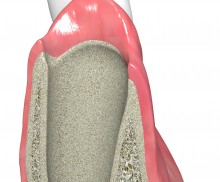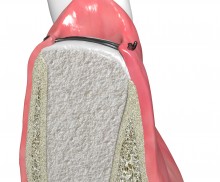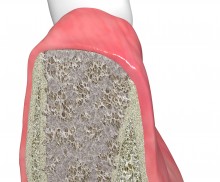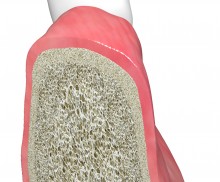Socket preservation - late implantation
|

With the aim of supporting an optimal formation of new bone, cerabone® granules may be mixed with allogeneic bone (maxgraft® granules); this approach combines the advantages of both materials (i.e., the biological potential of the allogenic material and the long-term volume stability of bovine bone), resulting in a fast regeneration and formation of vital, strong bone. When long-term stability is not necessary, a valid alternative to this approach is the use of synthetic bone-paste maxresorb® inject. This putty can be easily applied into the socket, and its unique composition, based on a nano-hydroxyapatite gel, promotes osseous regeneration. Another alternative, which also ensures an easy handling, is the use of collacone® max. This cone, made of a composite material of biphasic CaP granules bound in a collagen matrix, can be easily applied into the socket with tweezers.
"Socket preservation" typically refers to the filling of a socket with intact bony walls. In this case, the additional use of a membrane, such as collprotect®, albeit not necessary for the osseous regeneration, supports the stabilization of the the material and prevents its migration into the oral cavity. This is particularly important in those instances in which the socket cannot be closed by the mucosal flap. With the purpose of socket covering, the Jason® fleece represents a more cost-effective alternative to barrier membranes. The collagen fleece protects the socket and grafting material, supports wound healing, and may be left exposed for open healing. Another valid solution is to close the socket with mucoderm® (Socket seal technique). Alternativley, grafted sockts can be covered with a dense PTFE membrane like permamem® in an open healing procedure. Due to its dense structure permamem® acts as an efficient barrier against bacterial and cellular penetration, and may therefore be left in place for open healing in socket or ridge preservation.
Please Contact us for Literature.






























